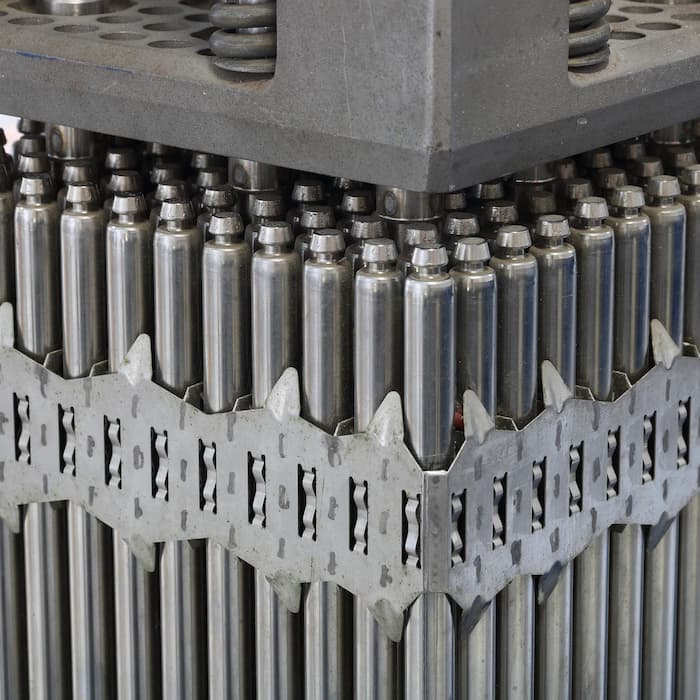ESG
EU's "Green" Light Boosts Uranium's Prospects

To the discomfiture of some (not all) environmentalists, the EU has tweaked its taxonomy for the term "Green" to include gas and nuclear power. An investment firm focused on uranium is understandably upbeat.
The European Union legislators' decision in early July to include
nuclear power and natural gas in the EU’s list of investments
deemed “green” will encourage investors to put money into the
space, a fund manager says.
The EU’s actions took place when the drive against fossil fuels
hit a roadblock following Russia’s invasion of Ukraine and the
surge in global energy prices.
During the summer, opponents of a plan to change the “taxonomy”
of what is counted as “green” failed to overturn attempts to
include the two energy sources in the EU’s definition of what is
an acceptable energy source. Officials from the European
Commission, the EU’s executive body, have said that natural gas
and nuclear energy should be included in the taxonomy under
certain conditions because they can help countries transition
away from coal.
Sprott, a
US/Canada-listed firm investing in uranium, is understandably
pleased about the result.
“We expect this ruling may help pave the way to greater
investment in nuclear energy, uranium and uranium mining
companies,” John Ciampaglia, CEO of Sprott and founder of the
Sprott Global Uranium Miners UCITS ETF (URNM), said.
“Uranium and uranium miners have de-coupled in the last couple of
months from general macro headwinds. What is interesting to us is
that they fell in sympathy with just about everything else in the
second quarter of the year, but they were able to break free so
far in the third quarter,” he said.
"U3O8, conversion, and enriched uranium prices have all
appreciated for both short- and long-term purchase contracts.
Current demand for conversion and enrichment, coupled with a
shift away from Russian suppliers, supports an increase in the
U3O8 uranium spot price which may bolster the uranium miners,” he
said.
"We believe the EU’s inclusion of nuclear energy in the
sustainable finance taxonomy, will help support new and existing
power plants and encourage greater investment by non-utility
investors. Some institutional investors in Europe had been
waiting on the sidelines for the EU taxonomy decision to be
approved and this may increase interest to the space,” he said.
"Although there has been significant positive short-term
performance, we believe the uranium bull market still has a long
way to run. Over the long term, increased demand coupled with an
uncertain uranium supply situation are both supportive of a
sustained bull market. Historically, uranium miners have
exhibited a low/moderate correlation to many major asset classes,
providing portfolio diversification potential,” he said.
The spot price of uranium has risen this year, from $29.77 per
ounce on January 1, rallying to $48.7 in April before declining
somewhat to $38.94. During the same time, by comparison, natural
gas prices, which are typically measured in Metric Million
British Thermal Unit, have risen sharply in 2022. In the US, they
fetched $6.726 per MMBTU, down from $9.44 in 22 August and up
from $3.515 at the end of 2021.
There are a number of ways to invest in uranium. Big mining and
production companies like Cameco, Kazatomprom, BHP and Rio Tinto
offer forms of exposure. As for natural gas, there are
exchange-traded funds, for example, such the United States
Natural Gas Fund and the ProShares Ultra Bloomberg Natural Gas
ETF. Investors can also tap into the market via firms such as
Shell, BP, ExxonMobil and Chevron.
Uranium is a more unusual commodity, and the range of investment options for the retail/affluent market is relatively limited. But the renewed interest in nuclear energy – a sector under a shadow in recent years, suggests that the market could expand.
Sprott’s Ciampaglia is upbeat.
"We believe that uranium miners are well positioned to take share
within the energy sector as energy security and decarbonization
take center stage globally. With the number of nuclear
reactors planned to increase by 35 per cent, governments are
signaling the need to embrace the reliable, efficient, clean, and
safe energy produced by nuclear to meet ambitious decarbonization
goals,” Ciampaglia said.
“At the same time, a uranium supply deficit is looming on the
horizon, and uranium miners may be the beneficiaries of increased
investment. Uranium and nuclear energy may be critical to the
clean energy transition and help countries achieve energy
security – reliable and affordable electricity,” he added.
The arguments over the case for nuclear energy as a form of energy continue. In the US, the writer Michael Schellenberger, who is also running to be California governor, has argued that nuclear energy is better for the environment and the fight against global warming than building large fields of solar panels and windmills. Some of the debate hinges around whether nuclear power stations can be built more cheaply and whether the waste products disposed of more safely. Other environmentalists who have championed nuclear energy include James Lovelock, renowned for his "Gaia" hypothesis. (He died this year at the age of 103.)